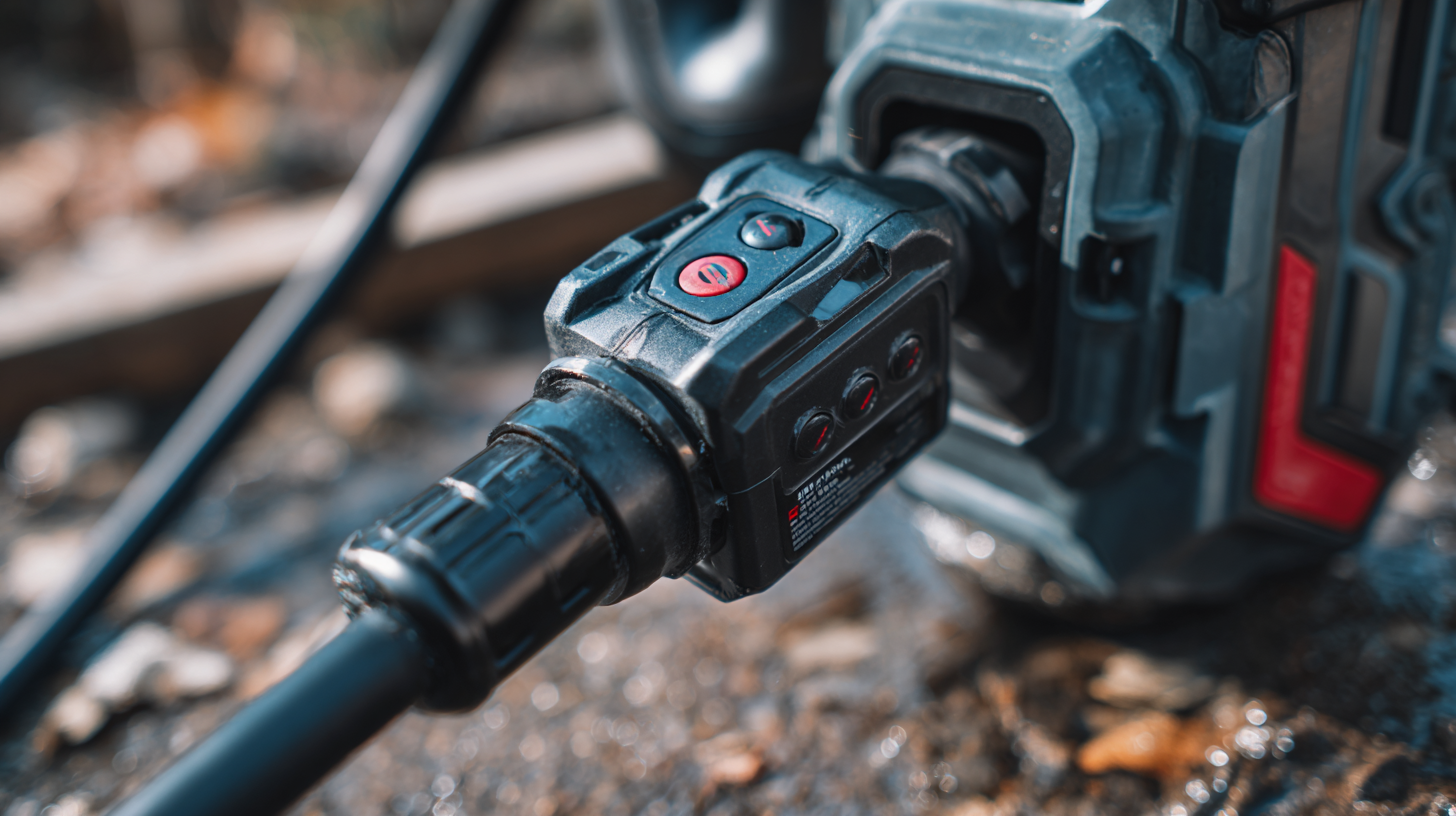The Future of Battery Pumps Revolutionizing Efficiency in Power Tools
The advent of battery pumps is set to revolutionize the efficiency of power tools, a sector that has seen significant advancements in recent years. According to a report by MarketsandMarkets, the global power tools market is projected to grow from $28.89 billion in 2020 to $41.17 billion by 2025, with battery-operated tools playing a critical role in this expansion. As the demand for portable and energy-efficient devices increases, battery pumps emerge as essential components that enhance performance while minimizing energy consumption. These pumps, particularly in conjunction with lithium-ion technology, represent a shift towards more sustainable practices that resonate with both industrial and consumer users. With an emphasis on continuous innovation, industry leaders are investing in the development of battery pump solutions that promise to not only improve operational efficiency but also to adapt seamlessly to various power tool applications.

The Rise of Battery-Powered Pumps in Modern Power Tools
The rise of battery-powered pumps is transforming the landscape of modern power tools, providing a cleaner, more efficient alternative to traditional models. According to a report by MarketsandMarkets, the global battery-powered tools market is expected to grow from $28.34 billion in 2020 to $43.39 billion by 2025, at a compound annual growth rate (CAGR) of 9.2%. This surge in popularity can be attributed to advancements in lithium-ion battery technology, which not only enhance performance but also extend the lifespan of tools. Battery pumps are now lighter, more compact, and deliver greater portability, making them ideal for both professional and DIY use.

Tips: When choosing a battery-powered pump, consider the battery capacity and the runtime it offers for your specific needs. Opting for pumps that have interchangeable batteries can also save time and increase efficiency by allowing you to keep a spare charged while you work.
These battery-powered innovations are not just about convenience; they significantly reduce reliance on noisy gas-powered tools. A recent analysis from Grand View Research estimates that the demand for battery-operated tools is driven by an increasing focus on sustainability and noise reduction. The deployment of these efficient tools aligns well with global efforts to promote eco-friendly practices in both residential and industrial settings.
Tips: Always check for tools with energy-efficient ratings and consider models that feature smart battery management systems to maximize effectiveness and longevity, ensuring you're making a sustainable choice in your tool selection.
Enhancing Efficiency: The Technological Advancements in Battery Pump Designs
Recent advancements in battery pump technology are transforming the efficiency landscape for power tools. According to a report by MarketsandMarkets, the global power tools market is projected to reach $41.7 billion by 2026, driven largely by innovations in battery-powered technology. Modern battery pumps are designed not only to improve battery life and runtime but also to enhance operational efficiency. The integration of brushless motors and advanced battery management systems significantly reduces energy consumption while maintaining peak performance, which is crucial in high-demand applications.
One of the most impactful developments is the adoption of lithium-ion technology in battery pumps, which provides longer life cycles and faster charging times compared to traditional lead-acid batteries. A study by Technavio indicates that the lithium-ion battery market for power tools is expected to grow at a CAGR of over 9% from 2021 to 2025. This growth underscores the critical role that battery efficiency plays in the overall performance of power tools. Additionally, innovations like smart sensors and IoT connectivity are enabling real-time monitoring, leading to predictive maintenance and thus minimizing downtime for professionals relying on these tools.
Comparing Performance: Traditional vs. Battery-Powered Pump Solutions
The performance of power tools has significantly evolved with the introduction of battery-powered pump solutions. Unlike traditional pumps that often rely on bulky cords and gas fuel, battery-powered options offer unmatched portability and convenience. These devices have been engineered to provide similar, if not superior, power output while promoting an eco-friendly approach to usage. Users can enjoy freedom of movement without the limitations imposed by power outlets or fuel sources, making battery pumps ideal for remote or hard-to-reach locations.
When choosing between traditional and battery-powered pump solutions, consider the specific needs of your projects. Battery pumps tend to perform efficiently in diverse environments, while traditional pumps may excel in continuous heavy-duty applications. Tips: Always check the battery life and charging time prior to making a purchase; this can significantly affect your operational efficiency. Additionally, weigh the maintenance requirements for both types, as battery-powered options often require less upkeep compared to their traditional counterparts.
Another significant factor is the weight and ergonomics of the tools. Battery pumps are usually lighter, which minimizes user fatigue during prolonged use. Tips: Look for models with ergonomic designs and comfortable grips to further enhance user experience. Ultimately, your choice should align with your functional requirements and personal preferences in terms of convenience and efficiency.
Sustainability in Action: The Environmental Benefits of Battery Pumps
The shift towards battery-powered pumps in power tools represents a significant leap in promoting sustainability within the industry. By replacing traditional fuel-operated systems, battery pumps reduce greenhouse gas emissions and reliance on fossil fuels. This transition not only lowers the carbon footprint associated with manufacturing and operating power tools but also offers a safer working environment, free from harmful exhaust fumes.

Moreover, the advancement of battery technology has led to increased efficiency and longevity, ensuring that power tools can perform optimally without needing frequent refueling. This shift encourages the adoption of more eco-friendly practices among industries using power tools, fostering a culture of sustainability. The use of rechargeable batteries also minimizes waste, as these batteries can often be reused and recycled, aligning with global efforts to reduce environmental impact and promote resource conservation.
Future Trends: Innovations Shaping the Next Generation of Power Tools
The power tools industry is experiencing a significant transformation, driven by innovations in battery pump technology. According to a recent report by IDTechEx, the global market for battery-operated tools is expected to reach $18 billion by 2025, highlighting a growing demand for more efficient and versatile equipment. This trend is largely fueled by advancements in lithium-ion battery technology, which provide lighter, longer-lasting power sources that enhance the usability of tools in various applications.
Additionally, the integration of smart technologies is shaping the future landscape of power tools. As reported by MarketsandMarkets, the smart power tools market is projected to grow from $3.8 billion in 2021 to $9.5 billion by 2026, with innovations such as IoT connectivity and advanced battery management systems. These developments not only improve operational efficiency but also allow for real-time monitoring and diagnostics, minimizing downtime and enhancing work precision. The adoption of such technologies ensures that the next generation of power tools will be more user-friendly, eco-efficient, and tailored to meet the evolving needs of both professionals and DIY enthusiasts.


